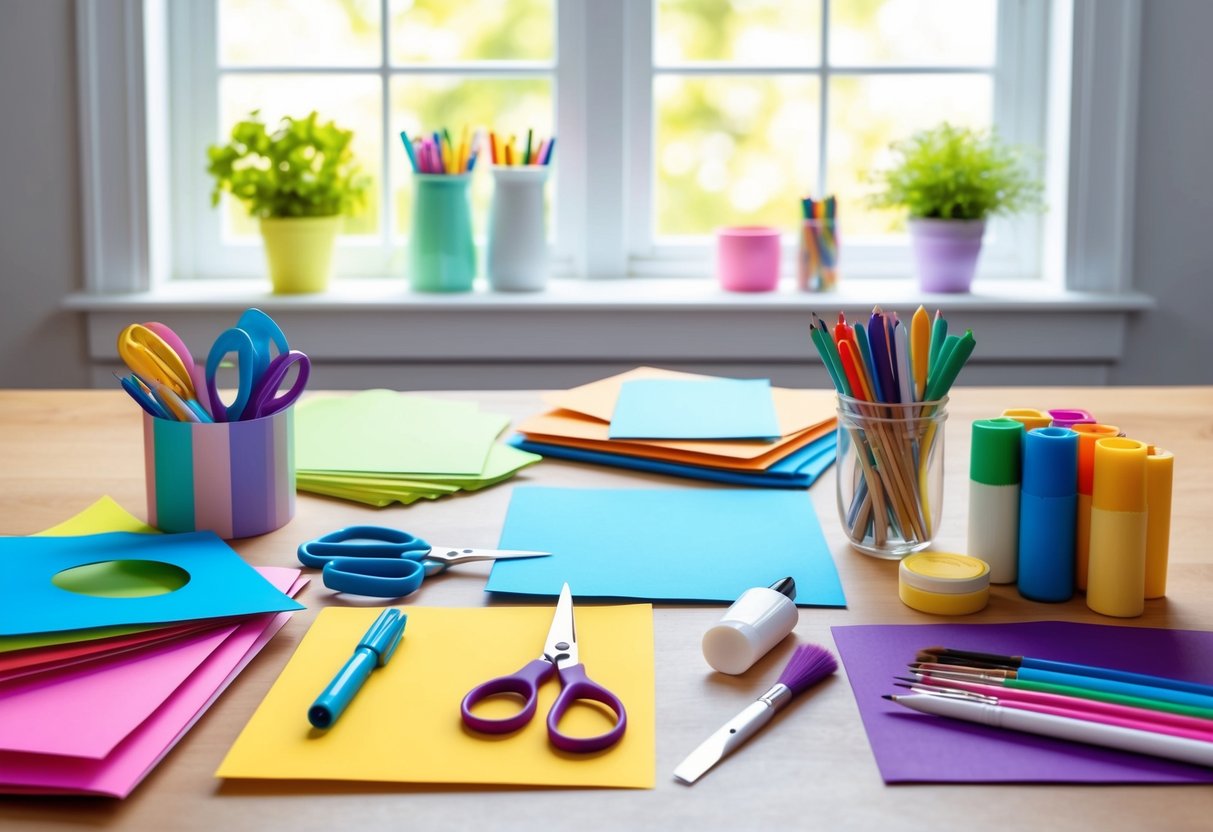
Creative Crochet Projects for Beginners
Crochet is one of the most accessible DIY ideas for new crafters. With simple tools and a small investment in yarn, beginners can quickly create practical items for the home, like coasters and washcloths, while building foundational crochet skills.
Starting With Basic Crochet Stitches
For anyone exploring how to make easy crochet projects, learning a few essential stitches is the first step. The chain stitch, single crochet, double crochet, and slip stitch form the backbone of most beginner patterns.
It helps to practice these in rows, creating a swatch to get comfortable with tension and consistency. Beginners often use medium-weight yarn and a hook size between 5mm and 6mm.
This combination is easier to handle and makes stitches more visible. Setting up a comfortable workspace, following video tutorials or step-by-step guides, and referencing free beginner-friendly patterns at sites like LoveCrafts will support learning.
Keep these basic stitches as a reference:
| Stitch | Symbol | Typical Uses |
|---|---|---|
| Chain | ch | Foundation, spaces |
| Single Crochet | sc | Dense, sturdy fabrics |
| Double Crochet | dc | Open, lacy textures |
| Slip Stitch | sl st | Joining, finishing |
Easy DIY Coasters
Coasters are a straightforward crochet project perfect for anyone starting out. They require only basic stitches and allow for a lot of creative variation with color and shape.
Standard DIY crochet coasters begin with a simple chain and are worked in the round using single or double crochet. A set of four to six coasters takes just a skein or two of cotton yarn, which is durable and easy to wash.
Patterns often use just single crochet, so it’s possible to finish one in about an hour. Adding stripes or alternating colors is a fun way to experiment without making the project more difficult.
Accessible patterns for coasters and other small projects are available on platforms like Pinterest. These step-by-step guides ensure that beginners understand each stage of the process, from creating the initial magic ring to weaving in the final yarn tail.
Personalized Magnets and Home Décor
DIY crafts like magnets and mini canvas art are practical ways to personalize living spaces. These projects require minimal materials and offer room for creative expression.
Crafting Decorative Fridge Magnets
Decorative fridge magnets are a popular entry point for people exploring DIY projects at home. Crafters can use polymer clay, bottle caps, buttons, fabric scraps, and even upcycled materials to design their own magnets.
Acrylic paint or decoupage with printed paper can further individualize each piece. For adhesion, strong craft glue works well, while flexible magnets or adhesive magnet strips provide an easy backing.
Themes might include seasonal patterns, family photos, geometric shapes, or hand-painted designs. These magnets are functional for holding notes and lists but also add a decorative touch to kitchen appliances.
Beginners can explore dozens of DIY fridge magnet projects featuring various styles and approaches. Many of these use affordable or recycled supplies, making the process budget-friendly and accessible.
Mini Canvas Art for Beginners
Mini canvas art offers a chance for those new to crafts to experiment with painting, drawing, or mixed media on a smaller scale. Pre-stretched canvases, often available in sizes like 4×4 or 5×7 inches, are easy to handle and require less time to complete than larger artworks.
Simple projects might involve geometric patterns, inspirational quotes, or abstract color blocks using acrylic paints. Stamping, stenciling, or attaching small found objects with craft glue can introduce texture and dimension.
For those looking for functional décor, mini canvases can be displayed on miniature easels or mounted with adhesive strips on walls.
Sketching and Drawing Ideas for Novices

Getting started with sketching and drawing opens the door to numerous diy craft ideas. Beginners will find that basic techniques and accessible wall art projects require only minimal tools and deliver rewarding, creative results.
Simple Sketching Techniques
Simple sketching is an ideal entry point for anyone interested in learning how to draw. Basic methods such as contour drawing, shading, and blending help beginners become comfortable with pencil or pen.
Practicing with everyday objects, like fruits or cups, teaches observation and improves hand-eye coordination. A useful approach involves breaking down objects into basic shapes—circles, squares, and triangles.
This technique simplifies complex subjects, making it easier for novices to start. Light, quick pencil strokes are less intimidating and can be gradually refined into more detailed sketches.
Key tips include:
- Use a soft graphite pencil (2B or 4B).
- Start with light outlines and avoid heavy pressure.
- Experiment with cross-hatching and simple texture marks for depth.
Free online tutorials, such as step-by-step pencil drawings, can provide additional guidance for those looking to practice structured techniques.
DIY Hand-Drawn Wall Art
Hand-drawn wall art combines artistic expression with home decor, making it a practical craft idea for beginners. With just paper, basic drawing tools, and a frame or clipboard, anyone can design unique art for their living space.
Simple geometric patterns, abstract doodles, or nature-inspired line art are popular starting points. Creating a set of complementary pieces in different sizes can fill an empty wall with personal flair.
Using colored pencils or markers adds variety and enhances visual interest. Try sketching favorite quotes with decorative borders or turning botanical sketches into a small gallery.
Those interested in more structured projects may find inspiration from beginner-friendly drawing tutorials for craft wall ideas. Experimenting with different styles and themes makes the process both enjoyable and customizable.



